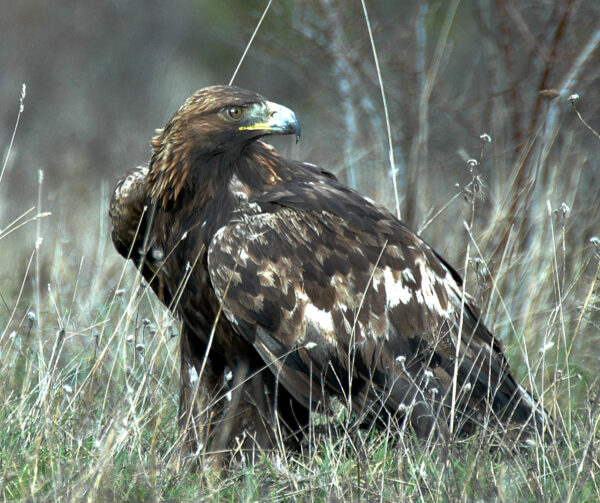The Golden Eagle Aquila chrysaetos in the northern Marches Apennines (Central Italy). Long-term monitoring (1983-2023) in the mountains of Pesaro-Urbino
Maurizio Saltarelli, Marco Pantalone
Abstract:
This study describes the monitoring work related to the nesting of the Golden Eagle Aquila chrysaetos in Northern Marches Apennines (Central Italy), in province of Pesaro-Urbino. Monitoring took place between 1983-2023, when a minimum of 1 and a maximum of 5 breeding pairs nested in the research area. The 16 nesting sites used by the Golden Eagle were located on cliffs with niches, ledges and high shallow caves, at an average height of 744.43 m (±249.7 m) a.s.l. The average number of nests per territory was 3.2 (±2.28 SD). The exposure of nest sites was heterogeneous. The maximum density for the species was 0.60 pairs/100 km2 and the Nearest Neighbor Distance was 8.84 km ±2.5. Most of the first incubations occurred in March and within the study period, at least one incubation was always observed. Incubation and fledging periods lasted on average 44.70 days (±1.78 d) and 81.76 days (±6.45 d), respectively. Over the study period, the breeding pairs raised a total of 98 chicks, of which 75 fledged successfully. Across the 41 years of monitoring, the productivity rate recorded was 0.65 (N. fledglings /N. pairs), the reproductive success 0.94 (N. fledglings /N. pairs with confirmed incubation), the fledging success 1.14 (fledglings/N. success pairs) and the nestling mortality was 23.5%. In 13.6% of the total successful breeding events, two fledglings were raised per nest. Only in three years of monitoring, no fledgling was raised.
